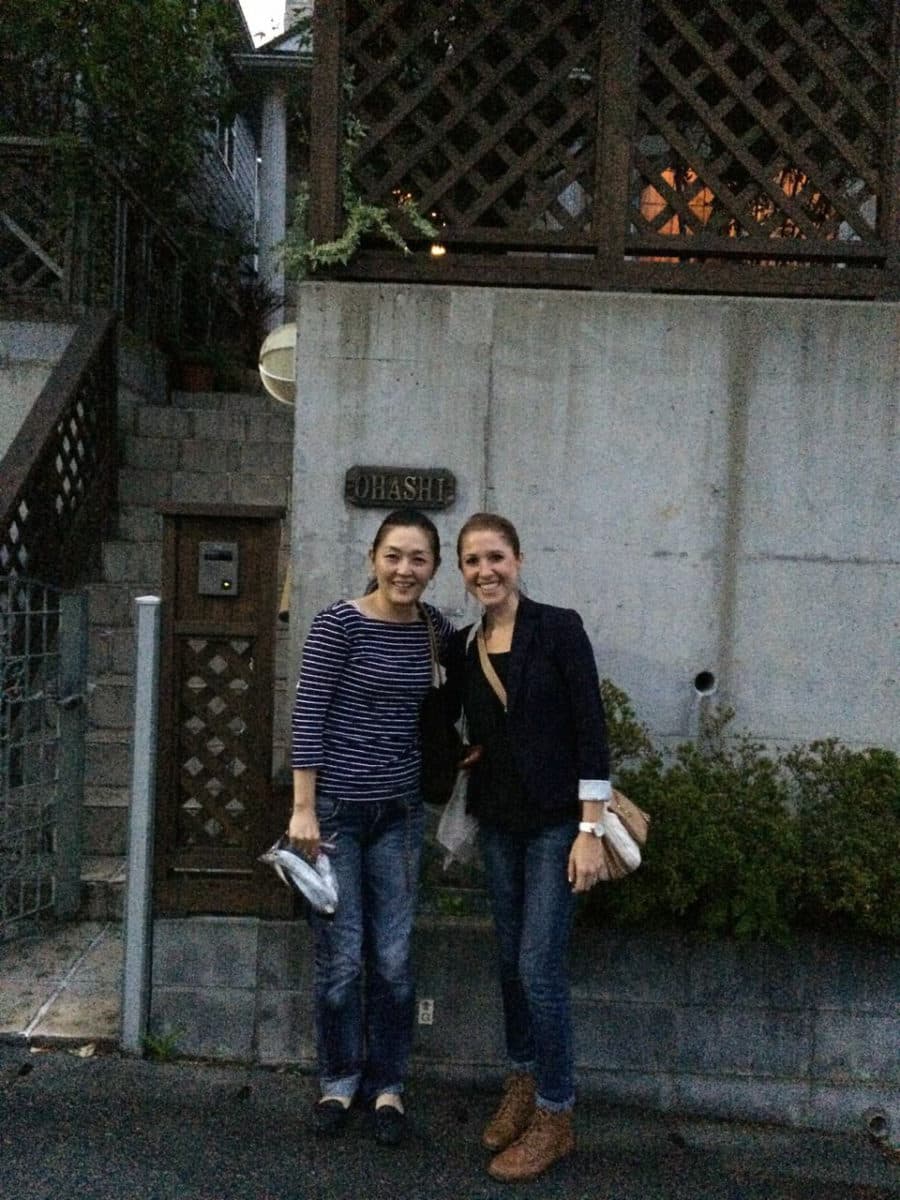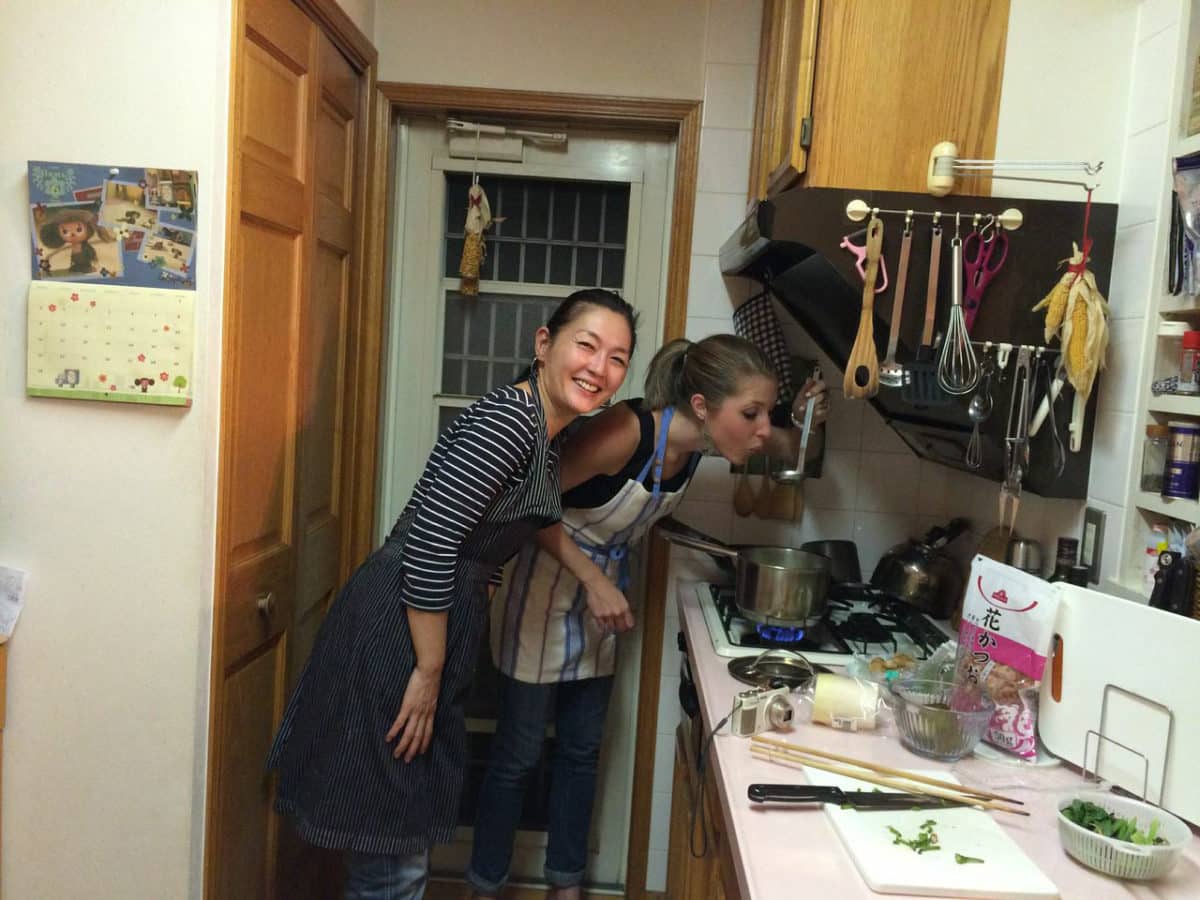My stomach churned once again as I passed another indecipherable train station sign along the Odakyu line. Sitting on that Japanese train, palms lightly sweating, I realized I had never quite felt so far from home.
I was in a country where I couldn’t speak or read the language. I was traveling on a public transportation system I didn’t understand. I had no cell phone service. And I was on my way to meet someone I’d only ever seen a picture of online, hoping desperately that she was a real person and was still willing to let me cook with her in her home.

Oh, and I was running 45 minutes late.
My lack of Japanese language skills had me relying on Google maps to navigate the Japanese train system, so when my Wi-Fi cut out, I was left to lean on the kindness of a handful of strangers who were gracious enough to point me in the right direction when I approached with my scribbled notepad of directions. I could only hope I was sitting on the right train and that my host — again, fingers crossed that this person wasn’t a serial killer or human trafficker — would still be waiting at my final stop at the Shinyurigaoka train station in the suburbs of Tokyo.
Out of My Element
As a former food critic and current travel writer, I like to think of myself as a pretty adventurous person. I’ll try anything, go anywhere, and I happen to love the feeling of losing myself in a moment. But this was a stretch even for me.
With only a few days to spend in Tokyo on my own, I had wanted to make the most of my experience and see how real people lived; how they shopped, how they cooked, what music they listened to at home, what brand of perfume they wore, etc. So, exactly one day before I boarded my flight, I googled “in-home experience in Tokyo.” Hidden beneath links for apartments and ads for AirBNB rentals was an obscure link for a website that “lets curious travelers meet with hosts eager to teach about local cuisine and culture while preparing an authentic meal together in the host’s home.”
The site looked brand-new, but it seemed right up my alley. I quickly entered my information on Tadaku.com, and sent out emails in mass quantities to the different hosts — each offering a series of menus and themes to choose from — in the hope that one would respond quickly and invite me into their home.
Luckily, there was one host available who, for $57 and the price of transportation, would gladly welcome me into her home to cook with her some of her favorite dishes from childhood.
At Home in Japan
When I stepped off the platform, I didn’t even have a chance to double-check the station map before I was met with an enormous hug and a warm greeting in broken English from a face that looked vaguely familiar from her photo online. There was no need for introductions; at this point, if this wasn’t my host Akiko Ohashi, then it didn’t matter. I was going home with this friendly person no matter what.
Fortunately it was Akiko, and she quickly swept me off to her local market where we chatted about our love of cooking and traveling, while our baskets hung heavy with fresh fish and all the ingredients needed to create our feast. A short cab ride later, and we pulled up in front of her adorable house, where massive plum trees acted as the gates to her front door and pots of young herbs adorned the stoop in the exact way the ones at my own house did.

The scene was oddly familiar. Old crooners sang out from her stereo system, jars of homemade liquors lined her cabinets, books were stacked up as stands for pots and lamps, and the subtle floral scent of Coco Chanel perfume hung in the air. I could have been in my own home if it weren’t for the Japanese slippers on my feet reminding me I was in someone else’s world.

Getting to Work
After a quick run-down of the menu, we finished our amuse bouche — a cherry tomato picked fresh from Akiko’s garden filled with homemade black sesame paste — grabbed our glasses of homemade plum sake, and went to work. Her menu included favorite dishes from her childhood (fried pork with ginger, boiled koya dofu, grilled seasonal fish, and potato salad) along with a recipe for flower sushi that would act as the artful centerpiece for our spread.
It was evident that both of us felt in our element the second we stepped into the kitchen, and we quickly found ourselves swaying from the cutting board to the stovetop in almost dancelike movements as the sounds of our giggles blended with the jazzy tunes and sizzling oil already filling the air. Akiko showed me her time-tested trick of how to roll sushi, and I quickly got the hang of stirring the pot the local way, with chopsticks. Once the pork was fried, the sushi was rolled, and the plates were set out, the two of us sat down at her white cloth-covered table to enjoy the fruits of our labor.
Whisking Away the Barriers
I guess I had just assumed the entire situation would have been a bit more, well… awkward. We were two people from different worlds, with no translator or mediator, in a kitchen where different cooking traditions, methods, and languages could have been obstacles for enjoying the night fully. But that wasn’t my experience at all.
Instead, it seemed that the simple act of cooking became the universal language that connected us instantly, and the food we prepared side-by-side brought the two of us together in a way that no translator could have ever done. Akiko and I shared an evening that I will never forget. She was my kindred spirit in Japan, and became my new friend in life. We keep up to this day, exchanging travel tips, recipe ideas, and pictures of the beautiful (and sometimes horrendous) creations we’ve cooked up in our kitchens. It truly is amazing how “at home” you can sometimes feel when you’re completely out of your element. ![]()
First published December 2014
